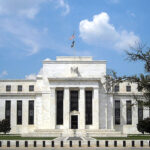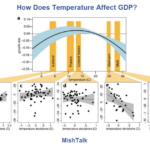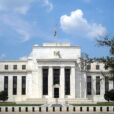
Following the explicit path of orthodox monetary and economic theory delves into something very much like Lewis Carroll’s monstrous rabbit hole he devised for Alice all the way back in 1865. Like the story’s Wonderland, the other side of the hole leads to some version of nonsense that seems to project, in the book’s case, the reader’s own senses. In economics and especially econometrics, the boundary to Wonderland is rational expectations.
The theory is simple enough, even intuitively so. Broadly speaking, rational expectations theory asserts that economic or market agents will act today on expectations of tomorrow. It is positively basic and so much so that it seems inarguable; but that is not the extent of it, as rational expectations leads in all sorts of directions once you follow the white rabbit of dominant theory.
Start with “forward guidance”, for instance. The current iteration of the term in use under Janet Yellen’s FOMC is not much like the version that preceded it. The former, under Bernanke’s regime, was closer to the original. While today we are supposed to believe forward guidance is something like the comical dot plots that accompany each and every (wrong) FOMC projection, what forward guidance in its native setting applies is much more convoluted (and appropriate for this examination).
If markets act according to rational expectations theory, then QE would never work; it couldn’t. The very act of suggesting QE would be its own undoing. In other words, if markets are fully rational and efficient, then they would expect QE to work and therefore would act today as if QE had already interjected its effects before it ever did anything (in anticipation; expectations). Since QE is supposed to work by lowering interest rates hard against the zero lower bound, rational market agents would instead sell bonds expecting higher interest rates in the future where QE dominates. Thus, interest rates would rise at the outset where policy intends that they fall.
Forward guidance was invented, quite literally, as a means to thwart rational expectations of, well, rational expectations. Paul Krugman in 1998 argued against the Bank of Japan not because he was against the forthcoming ZIRP but rather because he didn’t think it could overcome this initial contradiction. Dr. Krugman wanted BoJ to “credibly promise to be irresponsible” so that markets would have no choice but relent up front to the intent rather than act on future expectations.
For QE to work, then, it has to convince markets that it won’t work (because rates have to fall, which signals, on the whole, that the future is bleaker) but only so much as it can plausibly maintain that it willwork at some distant point far enough in the future that investors won’t act as if it will right from the start. That was the whole idea behind Bernanke’s final version of forward guidance, as he promised initially in 2012 that QE3 and QE4 would be “open ended” (Krugman’s “credibly promise to be irresponsible”) and large but then tied to the unemployment rate. In other words, the Fed would force down interest rates but only until the fruits of low interest rates were demonstrated.















